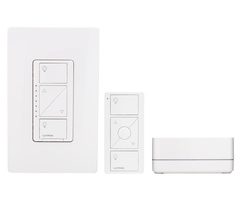Lights

If you are planning a smart home network, you will need to thing about what kinds of devices you want to use. Lights are one of the best additions you can make to your growing smart home network. These devices can be controlled from a central hub or remotely using an app on your phone. Their convenience and versatility makes them a great component of any smart network.
When it comes to smart lights, there are many options available. Many users choose to use multiple smart light options in their homes. Every room is different, and going with a different set of lights in each environment can help you create a more robust network. You can plan each room accordingly to create the ideal lighting scheme for your needs. Not every room needs to have smart lights, but you can only remotely control the smart lights in your network.
Smart light bulbs are one of the easiest types of smart lights to picture. These look just like regular light bulbs that connect with regular sockets. But these light bulbs contain communication software that lets them speak with a smart network. This can be anything like Z-Wave or HomeKit through WIFI. You will want to keep the light switch or lamp powered on so that the light bulb can be controlled. You can turn it on and off and adjust its brightness at any time from virtually anywhere.
Smart light switches represent another option. These devices replace the standard in-wall switches that control the lights. The existing in-wall switch is removed, and the wires are disconnected. The wires are then connected with the new smart switch. You can then install the switch into the same wall gang that the old switch used. Just like other smart lights, you can control this switch remotely from anywhere using an app. But unlike with smart light bulbs, you won't have to worry about leaving a lamp or a switch on if you want to activate the light remotely.
There are also smart outlets. These appliances replace standard in-wall outlets. You then connect electrical appliances to the smart outlets so that the connected devices can be powered on or off remotely. The smart outlet will cut or apply power based on the instructions from the controller. By connecting a lamp to the smart outlet, you can control your lights remotely.
Finally, there are plug-in modules. These appliances are similar to smart outlets, but they don't replace the entire outlet. Instead, these devices connect with standard wall outlets. You then plug-in a lamp to a secondary outlet on the plug-in module itself. You will then be able to control the connected device remotely. Plug-in modules are good when you want something similar to a smart outlet, but you don't want to have to install a new outlet.











